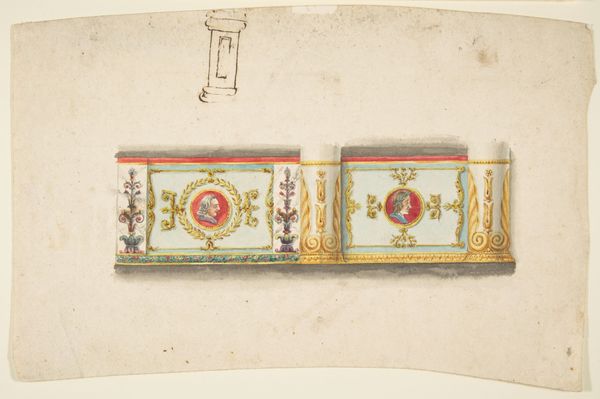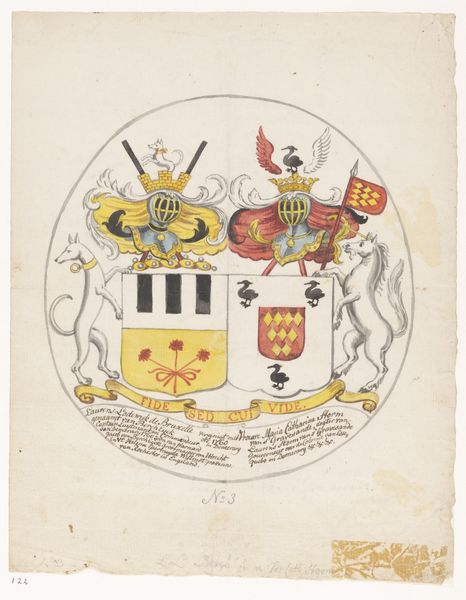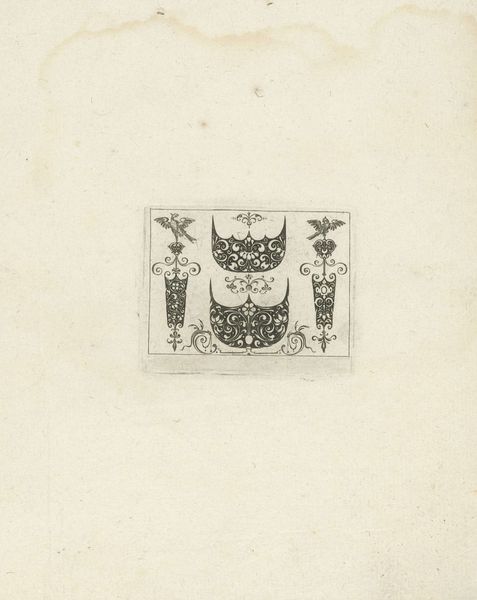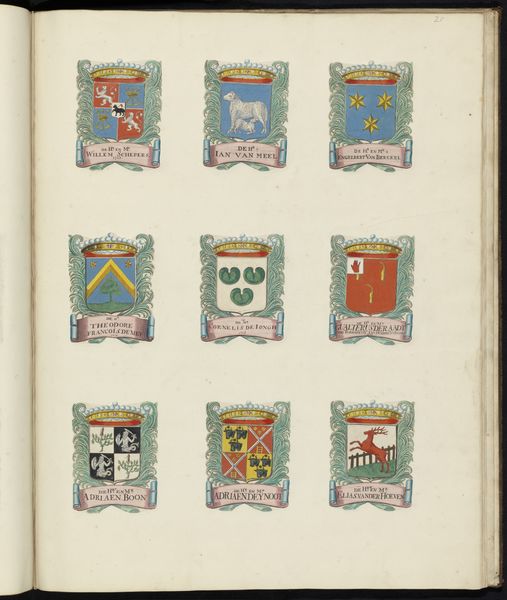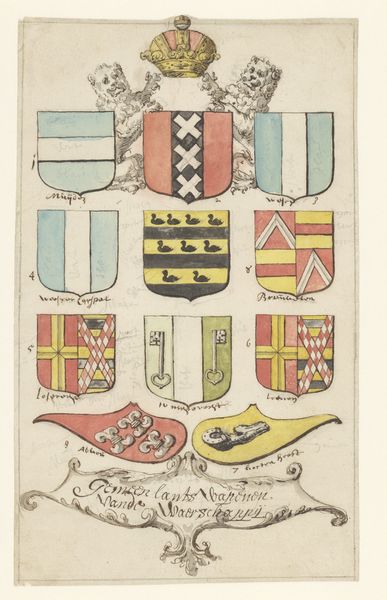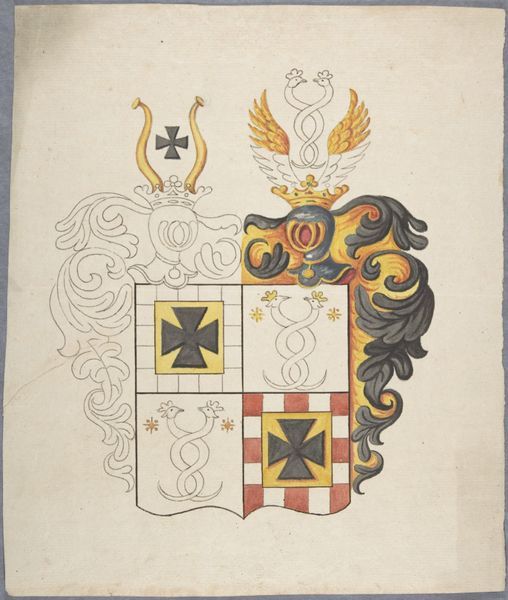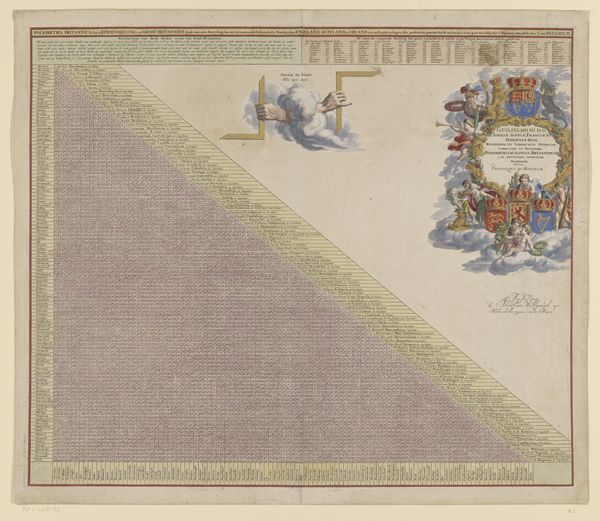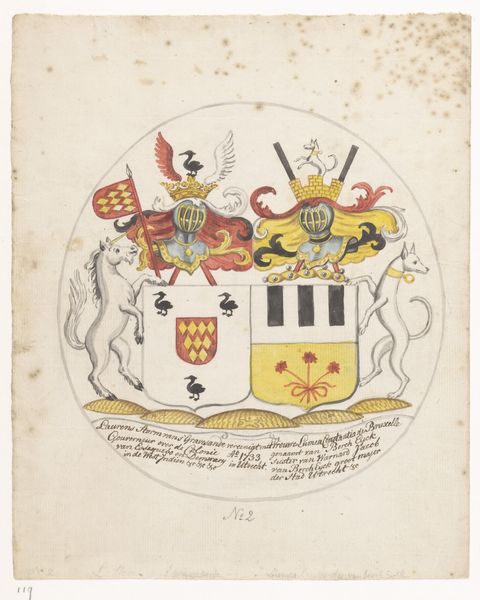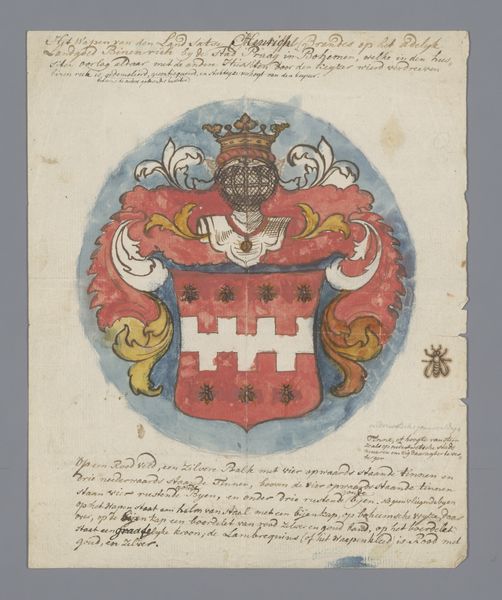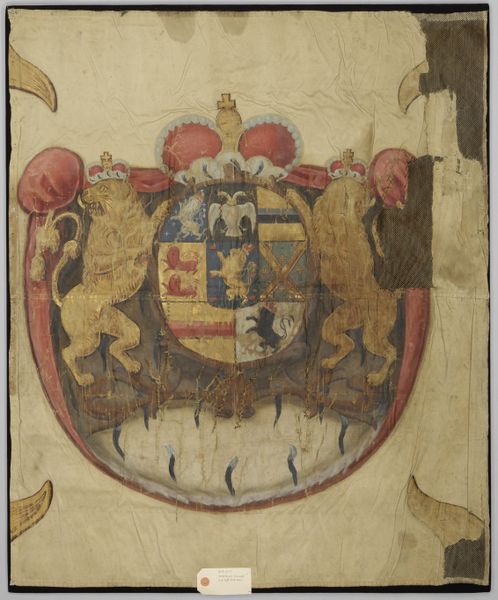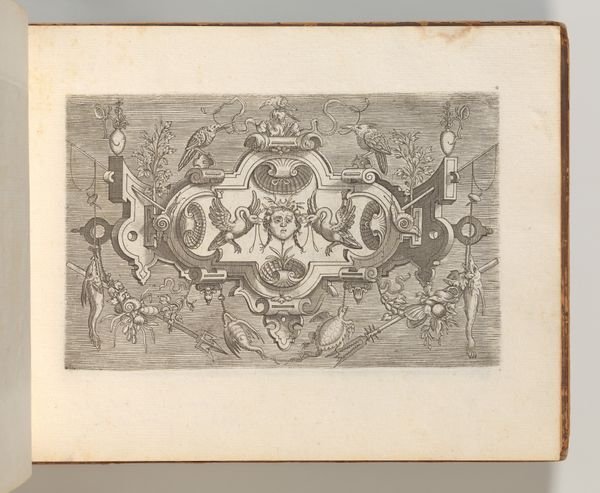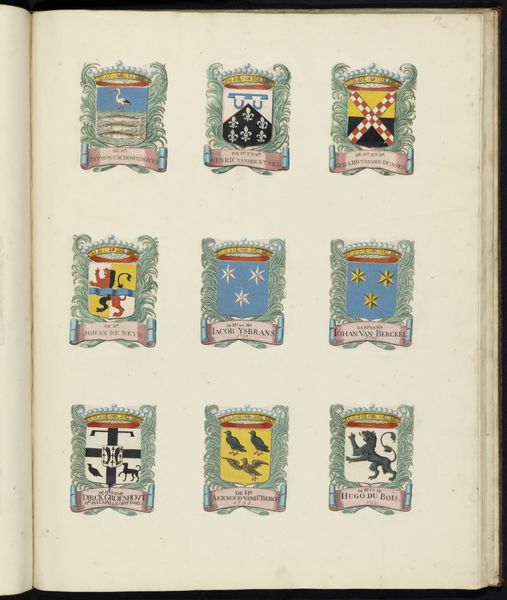
Dimensions: height 192 mm, width 239 mm
Copyright: Rijks Museum: Open Domain
Editor: This is the “Stamboom van de familie Brandes,” a family tree created around 1760-1790. It's done with ink and watercolor on paper. It’s fascinating how family history is visually represented, almost like a landscape. What stands out to you about this piece? Curator: Well, the first thing that grabs my attention is how this artwork functions within the social structures of its time. Genealogical art like this wasn't merely decorative; it was a public declaration. Notice how the coats of arms become almost like advertisements? Editor: I hadn’t thought about them like advertisements before, but I see what you mean! Curator: Absolutely. Consider the role of patronage in the 18th century. Visual displays of lineage were ways for families to assert their social standing, inviting support or alliances. How does this change your perception of it? Editor: It definitely shifts my understanding. It feels less personal and more like a strategic statement. So, who exactly *saw* pieces like this? Curator: That’s a good question. Likely, it would have been displayed within the home, presented to visitors to communicate the family’s heritage and aspirations. Perhaps even presented at social functions related to marriages. Think of this less as a drawing, and more like a performance of status. It highlights the power of art to reinforce societal norms. Editor: I hadn't considered the performance aspect! It’s made me rethink how artworks interact with society beyond just being visually appealing. Thanks, that's a cool perspective to have.
Comments
No comments
Be the first to comment and join the conversation on the ultimate creative platform.
